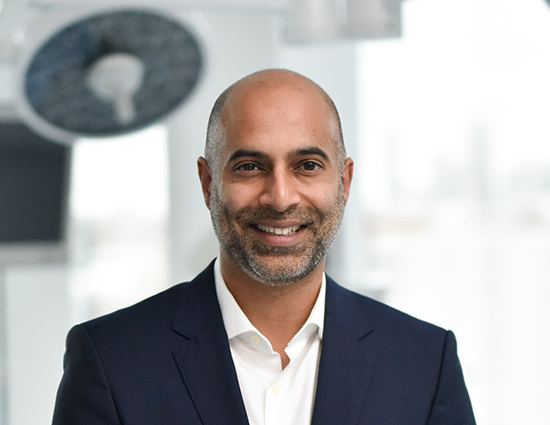When Rockley Photonics unveiled a cutting-edge ‘clinic-on-the-wrist’ device last summer, the technology world certainly sat up and took notice. Rockley’s wearable kit scans non-invasively for a wide range of biomarkers, checking everything from glucose trends to blood alcohol. With its lead customer none other than Apple, this can surely mean only one thing: future iterations of the Apple Watch will offer health monitoring to a standard hitherto only achievable in a lab.
As a physicist currently assessing the extraordinary potential of photonics with my colleagues here at CC, I’m enthused by this direction of travel. My prediction is that we are looking at a future where insights far beyond the sleep, steps and heart of Fitbit will be readily available to consumers. Instead, Apple Watch wearers will access a remarkable range and depth of health intel. And few would blame Apple for choosing wellness monitoring to be the way forward. Growth in the medtech sector is currently giving both fintech and cybersecurity a run for their money in terms of global growth and investment. Spurred on, certainly, by Rockley Photonics’ latest announcement.
Integrated photonics combines disparate optical components, each with a specific function, into a single chip or device. Unlike other wearable health monitors, the Rockley device is powered by infrared spectrophotometers that accurately detect and monitor a wide range of biomarkers. A non-invasive sensor probes beneath the skin to analyse blood, interstitial fluids and layers of the dermis for specific constituents and physical phenomena.
I am convinced this is one of the most dynamic areas of medtech innovation right now. Just consider the potential. The Apple Watch may soon be able to measure lactates and flag up serious diseases such as sepsis or cardiac failure. In future, it could offer medical-standard glucose monitoring for diabetes and accurate long-term ECG monitoring. Everyday lifestyle choices could be informed by correlating blood alcohol to the number of drinks consumed, glucose to calories in or snacking, or lactate to exercise thresholds. It’s quite possible to envisage a time when doctors will use a patient’s Apple Watch to inform diagnosis, monitoring and treatment.
Extending the range of photonics based sensing
It is no understatement to say that photonics of this sort offers the potential to revolutionise the health monitoring sector. But to present a balanced view, we may need to temper the ambitions somewhat. The current state-of-the-art commercially ready technology only operates in the near infrared, requiring more components to support sensing in the visible or into the mid infrared. This challenge is not without answers though. Indeed, recently we have seen the development of new technologies, materials and hybrid integration methods. They include silicon nitride, integrated frequency combs and heterogeneously integrated lasers that are being developed to extend the range of sensing.
With small wearable devices, the performance is inherently limited by the laser budget. Consequently, the battery capacity and peak current draw determine what you can sense, and how often you can sense it. The barrier of power density has limited wearable sensing to methods that have intrinsically high photon counts, such as absorption or scattering spectroscopy.
The medtech team here has undertaken a wide range of projects for clients which involve micro-optical components and advanced optics. Of these, many advanced diagnostic instruments specialise in the detection of weak signals, such as fluorescence and Raman scattering. These methods can offer great advantages when trying to find a biomarker signal within a sea of background. Without a distinct signal the metrics quantification becomes questionable and therefore the accuracy and precision of the diagnosis falls.
The exciting future is when, not if, the technology advances to a stage of true medical-grade diagnostics in a wearable device. And we’re not far away. The injection of capital investment will increase the rate of innovation, while Apple’s commercial adoption of semi-mature technology is an indicator that these challenges will soon be addressed.
Custom integrated photonic devices
Along with colleagues I undertake a wide range of projects for clients which involve micro-optical components and advanced optics. Until now, custom integrated photonic devices have been prohibitively expensive to develop, due to a limited number of foundries and low manufacturing readiness levels. But my observation is that we have now reached the tipping point. Additive methods such as wafer-level optics or wafer deposited filters, the rise of silicon photonics, hybrid integration methods and wafer-level testing will push integrated photonics to become ever more robust, cheap and widespread. Just think what potential this will unlock.
Optics for personalised medicine
One field in which we increasingly utilise optics here at CC is that of personalised medicine. From genes to RNA, DNA to phenotypes, devices within this sphere often require optics at some point in the process. Until now, much of this has been achieved with classical optical technology. But once photonics become more readily available, personalised medicine looks set to benefit dramatically.
The potential gains for both patients and medical practitioners are impressive. Health technology powered by photonics could be able to increase throughput of testing by an order of magnitude. The cost of photonics-based medtech devices will fall dramatically. And – as Apple looks set to prove – miniaturisation of kit will become an everyday reality. Please do メール if you’d like to discuss the topic in more detail – it’ll be great to hear from you.





